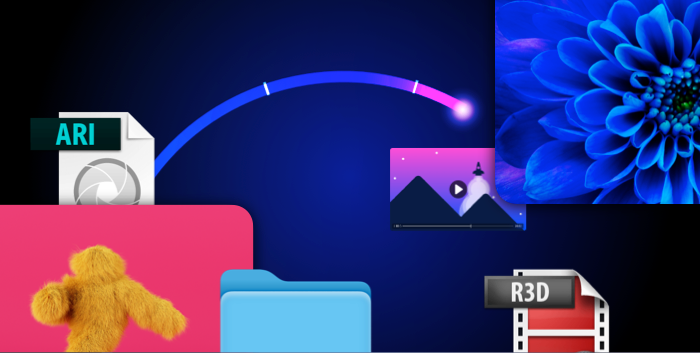
Storj decentralized cloud storage now enables fixed wallet payment via Ethereum and STORJ token. This new feature enables performant, geo-distributed data storage for smart contract-based Web3 applications.
Key points
- Storj upgraded its billing and payment system to generate fixed Ethereum addresses for Storj accounts.
- Users can create a fixed Ethereum-based STORJ deposit address in their Payment Portal.
- Users can deposit STORJ tokens into their Storj account through the Storj dashboard.
- Smart-contract-based EVM apps can now interact with decentralized storage using the STORJ token.
- Enables a wide range of new use cases, including perpetual storage, programmatic use of storage
- Represents continuing progress in the decentralization of the Storj ecosystem
What is this new feature and why should I care?
Web3 Apps need reliable, performant cloud storage with native EVM support. Storj has upgraded the billing and payment system to generate fixed Ethereum addresses per Storj account, enabling smart-contract-based EVM apps to interface in a programmatic way with decentralized storage using the STORJ token. As the only decentralized storage provider compatible with EVM, this makes it easy for Web3 developers to form a smart contract through Storj without having to learn a new blockchain. Most web3 apps rely on web2 infrastructure because until now, there hasn't been a fast, reliable and EVM compatible decentralized storage service. Storj already out performs AWS S3 for global performance, and now provides the simplest integration for dapps that need cloud object storage.
Inside the Storj DCS dashboard, users can deposit STORJ tokens into their DCS account. The Storj DCS satellite transacts with storage nodes in STORJ token. The STORJ token is an ERC20 contract on Ethereum that acts as a payment mechanism for the decentralized Storj network, enabling storage nodes from across the globe to share their excess capacity (storage and bandwidth) in exchange for STORJ token. STORJ token payments enable users to pay for decentralized cloud services on-chain, using the Ethereum protocol and related Ethereum contracts.
With this new feature released, users can now see an update to the Storj Satellite Dashboard and will receive a fixed Ethereum-based STORJ deposit address per Storj DCS account in their Payment Portal.

Ethereum smart contracts enable parties to execute conditional logic around value transfer in a programmatic way (using Solidity code). By deploying smart contract logic onto the Ethereum blockchain, a third party can interact with this address in a trustless way. Smart contracts enable value transfer contracts in a completely trustless manner and stack logical functions on top of each other like lego blocks. This means there is no need for a third party to hold, manage, or custody the funds—the whole process is handled by code.
For developers, this can enable new types of decentralized applications that programmatically bind smart contracts to files (objects) stored on the decentralized cloud.
What can you do with a fixed wallet and ETH composability?
With this new feature, developers can write a sequence of EVM compatible code to interact and fund Storj accounts directly. For example, an organization like “The Internet Archive” could create fixed ethereum addresses to fund the storage and availability of some underlying media content. The public then is able to help fund the ongoing availability of the content, creating a sort of “public good” around ensuring its availability and liveness on the internet without the need for a middle person.

EVM native payments are made possible by the use of smart contracts. This opens up a new cloud design pattern that programmatically binds decentralized cloud storage to directly interface with a wide variety of applications on Ethereum, on-chain. By utilizing smart contracts, these applications can be built in a completely trustless manner, meaning that users can be sure that their funds are safe.
So what can you do with this new feature?
How about setting up a perpetual storage contract? How about streaming open source AI models? Or perhaps you’d like to contribute to the Internet Archive and set up the fixed wallet for funding?
Bottom line, this makes it so much easier on developers to continue to innovate in Web3, marrying the Web 3.0 design patterns (smart contracts, programmable incentive structures) with storage that is both decentralized and enterprise grade (durable, secure, reliable, and performant).
How can I start to use this new feature in Storj?
This feature is available now within the Storj DCS dashboard. The steps to make use of this capability are below.
How to add STORJ tokens to your account.
1. In the Storj DCS Dashboard, navigate to Billing> Payment Methods> “Add STORJ Tokens” to generate a fixed Ethereum contract address for your account.
2. Then click Add funds to deposit STORJ tokens onto your Storj account. This deposit address will begin with a “0x…”. It can be copied to your clipboard and is even represented in QR format in the dashboard (example below).

3. From the dashboard, you will be able to see a history of your deposits, including critical on-chain information like the Transaction ID, Date, Amount in USD, status, and a link to the relevant block explorer (i.e,. https://etherscan.io/)

For more detailed instructions, refer to the Storj DCS Docs article on Payment Methods.
>> We’d love to hear your idea of how you can use this new feature. Share it in our forum here.
>> Want to get started? Signup here.
>> Want to check out the open source utility? Check out the repository on github here.

















